Help Your Dog Heal Quickly with these Natural Methods

You come home from an outdoor excursion and you notice your four legged friend has a cut on his leg. You could spray it with an alcohol based disinfectant , or swab it with an antibiotic cream , in an effort to kill the bacteria that could infect the wound.
However, according to holistic medicine, these modern drugs may constitute a chemical overkill, going far past their intended purpose (killing harmful bacteria) and killing the beneficial bacteria that live on the dog’s skin, known as the microbiome. What sense is there in applying heavy medication when only a light protective force is needed? Especially when there are natural, effective, inexpensive, and synergistic, safe alternatives, remedies that have been used successfully for centuries.
Healing from the Inside
Any wound can be cleaned and encouraged to heal with a strongly brewed herbal tea, which can be applied as a spray, rinse, wash or compress.

Herbs known for their skin healing properties include comfrey leaf and root, St. John’s Wort blossoms, calendula blossoms, broad or narrow leaved plaintain leaves and lavender leaves and blossoms. Many herbal supply companies, health food stores and natural food markets sell dried herbs that can be used for wound treatment, or better yet, you can plant and grow your own.
Comfrey and lavender are easy to grow perennials, calendula is a self seeding annual, and plaintain and St. Johns Wort grow wild in much of the US.
Comfrey is important to wound healing because it contains allantoin, a cell growth stimulant. The plant is also known as “knit bone” because it helps heal broken bones when applied topically. Comfrey works so quickly that it should not be applied to sutures that will have to be removed or to puncture wounds in which bacteria might be trapped by rapidly healing skin , but it is highly effective on scrapes, burns, cuts, insect or spider bites, and other injuries.
Teas containing anti-inflammatory herbs like German chamomile, Roman chamomile, or lavender help reduce itching and discomfort when sprayed or applied topically.
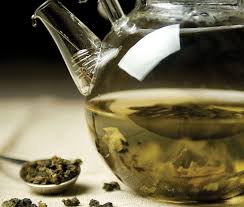
To brew an herbal tea for cleansing wounds or for treatment, use 2 teaspoons dried herb or 2 tablespoons fresh herb per cup of boiling water. Cover and let the tea steep until cool. Strain, refrigerate, and apply as needed, up to several times per day.
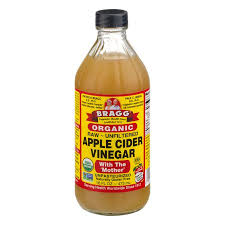 Vinegar Rinse
Vinegar Rinse
Apple cider vinegar has long been used for first aid. You can apply it to cuts, wounds, dull fur, skin infections, calluses and itchy skin. It helps soothe the skin, improves the coat, aids in healing, and helps repel fleas and ticks.
To prepare a skin tonic, try this simple blend of herbs in vinegar. Combine fresh or dried rosemary leaves, calendula blossoms, rose petals, juniper berries, lavender stalks or flowers, lemon peel, orange peel, sage, cinnamon, cloves and/or chamomile blossoms in any combination. Arrange herbs loosely in a glass jar and fill one third with dried herbs. Then cover with raw, unpasteurized organic cider vinegar. Braggs sells one and you can find it at your local grocery store. Seal tightly and place the jar in a warm place, in or out of the sun, for a month or longer.
Strain and transfer to storage bottles. Keep in a cool, dark place. Shake well before using to improve coat condition, rinse wounds, heal sores, repel insects, and soothe irritated skin. For dogs with white or very light coats, substitute plain white vinegar.
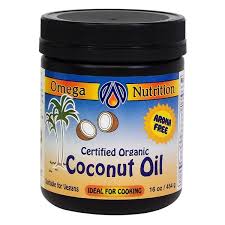
Coconut Oil
Coconut oil ‘s medium chain fatty acids fight harmful bacteria, viruses, yeasts, fungi and parasites, making it a perfect salve or dressing for cuts and wounds of every description. The only down side to coconut oil is that in temperatures below 75 degrees, it’s solid. Keep some in a small bottle or jar for easy warming in hot water if needed.
Look for unrefined or “virgin” coconut oil, which is made from fresh coconuts. Pressed by hand using traditional methods or manufactured in state of the art factories, virgin coconut oil retains most of the nutrients found in fresh coconut. Assuming the oil is correctly labeled and properly prepared, virgin coconut oil in glass rather than plastic is a better choice. Good quality oil is colorless when liquid and pure white when solid, never yellow or pink, and it should not contain any residue or have an “off” or rancid odor.
There is a down side though. Many dogs like the flavor and will lick it off. Don’t worry though, it is good for them, but licking the wound is not helpful for healing. So only use it topically on areas that your dog cannot reach.
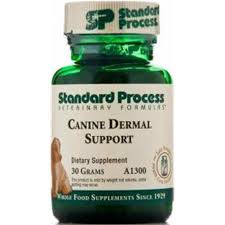
Healing from the inside out
Many vitamins and minerals are known to have healing properties, but zinc works especially well for healing wounds. Supplementing the diet with a product like Standard Process Dermal Support, which contains zinc and other skin healing ingredients from whole food sources, provides the body with easily assimilated nutrients that help repair tissue damage.
Zinc and other trace minerals are found in unrefined sea salt. Salt’s electrolytes and the enzymes they help produce are important to healthy immune function, rapid wound healing, adrenal health and the regulation of body fluids. Add up to 1/8 teaspoon unrefined sea salt per 25 pounds of body weight per day to food.

Seacure
High quality protein is essential for healing wounds and for repairing damaged skin and fur. Seacure, a fermented whitefish powder, is pre-digested so that it’s amino acids and peptides, the building blocks of skin and hair, are immediately absorbed and utilized. It is available in chewable dog treat tablets, as a powder, and in 500 mg. capsules.
To help assist dogs recovery from surgery, wounds, broken bones and other traumatic injuries, give at least twice the label’s recommended dosage of 1 capsule, 1 tablet, or one teaspoon powder per 10 lbs. of body weight.
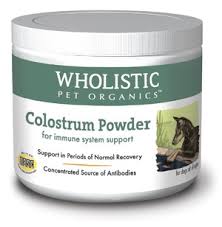
Colostrum
Colostrum, the first milk produced by mammals after giving birth, has become a popular supplement because of it’s immune boosting properties. Holistic vets recommend feeding colostrum to injured animals and you can also apply it to cuts and wounds. Colostrum contains EgF (epithelial growth factors) and IgF (insulin like growth factor). Without adequate growth factors, the body cannot repair damaged cells, no matter how well the patient is being fed.
Because research has found that salivary amylase and hydrochloric acid in the stomach improve the activity of colostrum’s growth factors, it is best to offer the powder by itself on a empty stomach half an hour or more before a meal. Give it once per day, preferably in the morning.
For topical application, mix colostrum powder with enough herbal tea, filtered water or hydrosol to create a thin paste, which can be applied directly to the wound. Your dog will more than likely want to lick it off, so keep him busy for about 5 minutes till it is absorbed. Leave the wound uncovered so it can breathe and apply colostrum twice a day until healing is underway.
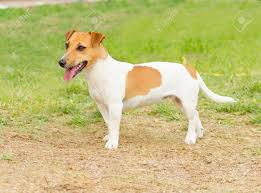
Barefoot Outdoors
Mother Nature’s healing aids include unfiltered natural light, which all of us need for optimum health, and direct exposure to earth and grass. Insufficient natural light can disrupt endocrine function and slow healing. Most dogs seek natural light, just as they seek contact with bare earth and grass.
Clinical research suggests that standing on the earth can decrease inflammation and increase circulation to accelerate healing in dogs and people. When we are wounded, the immune system springs into action sending scavengers to the site to break down damaged tissues for removal from the body. Earth contact provides an unlimited supply of free electrons to neutralize excess free radicals that cause inflammation.
What You Can Do
- Clean cuts, abrasions and wounds with skin soothing herbal teas or an herb vinegar rinse.
- Spray or apply skin healing hydrosols, essential oil blends, salves or other topical products that stimulate cell growth, fight infection and speed repair.
- Give your dog enzymes and other supplements that help heal wounds from the inside.
- Keep natural first aid products on hand to treat bites, scrapes and other wounds as soon as they occur.
When to Call a Veterinarian
If you find your dog in any of these situations it is advised to contact your vet immediately.
- Higher than normal temperature (normal is about 101 to 101.5)
- Unusually depressed or frantic behavior, particularly if the episode follows an injury or illness.
- Lack of usual appetite or failure to eliminate.
- Any wound where an item is still lodged within the injury site or if there is potential injury to a tendon, bone or joint.
- Any wound that is bleeding profusely or drains thick, cloudy pus.
- Anytime your dog has pain or experiences serious swelling, heat or lameness.
- Any wound that is non sensitive at the time of injury but develops sensitivity in the following days.
Never put off calling your vet solely to save money. Consider the visit as an investment in your dog’s health and an educational opportunity.
The Whole Dog Journal
